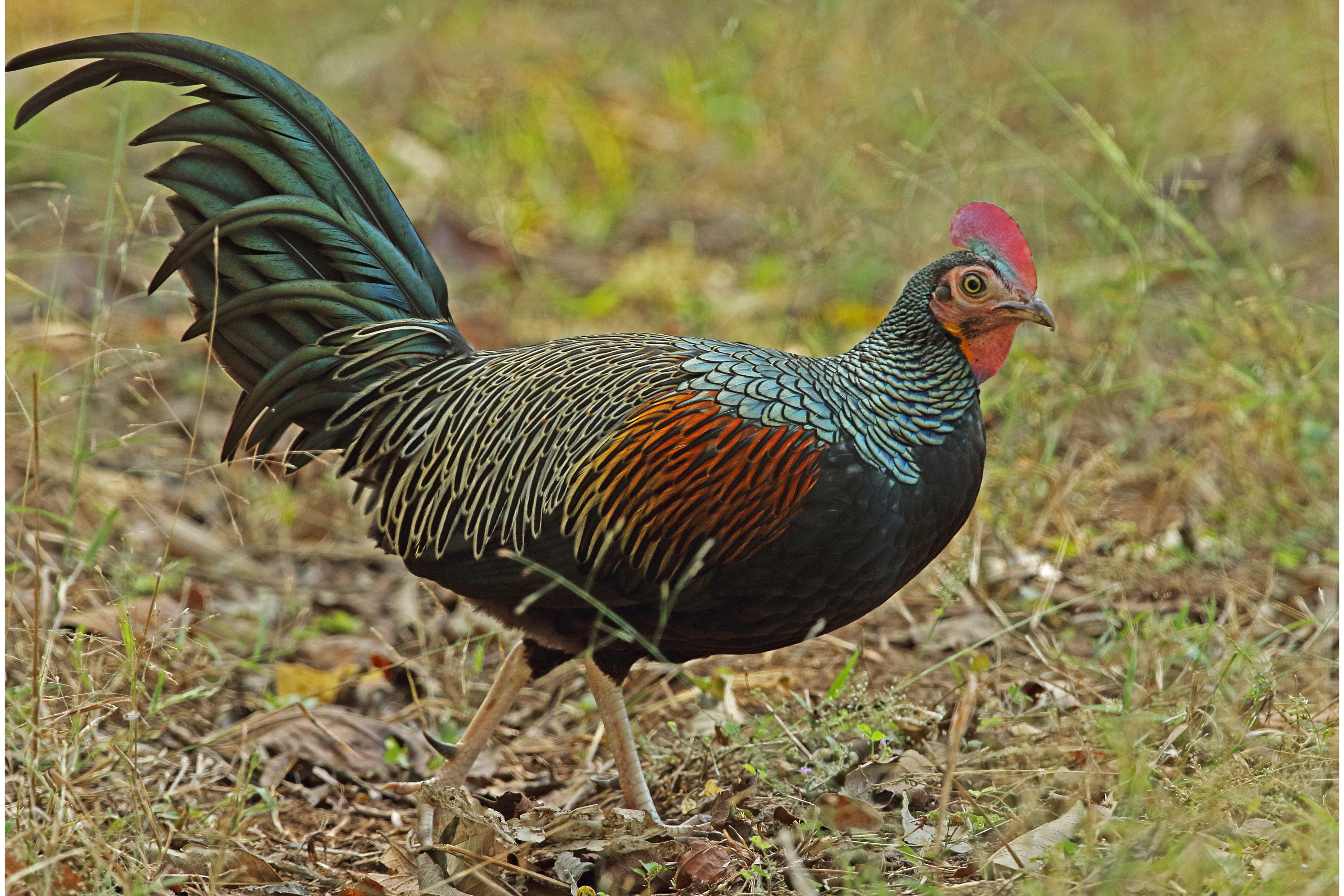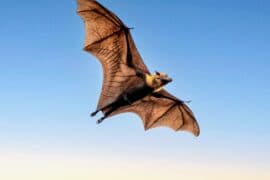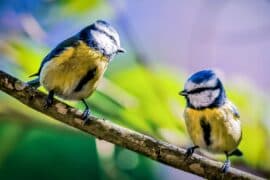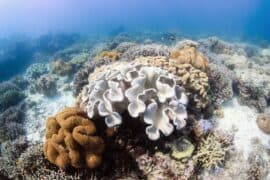Green junglefowl
(Gallus varius)

Description
The green junglefowl (Gallus varius), also known as Javan junglefowl, forktail or green Javanese junglefowl, is the most distantly related and the first to diverge at least 4 million years ago among the four species of the Junglefowl. Hybridization with domestic chicken has also been reported. Green junglefowl is a medium-sized (up to 75 cm long) bird in the pheasant family Phasianidae. The colouration of the green junglefowl is sexually dimorphic. The male's plumage is dark and blackish at a distance. A closer view reveals an iridescent mantle of gleaming scales reminiscent in colour and pattern to those seen in the ocellated turkey and green peafowl. Each scale is vivid blue at its base and moves through various shades of gold and bronzed green. Specialized plumes framing the throat of the male green junglefowl are highly light-reflective and appear violet at the proximal and sky blue at the distal edges. The lesser coverts of the wing are a striking burnt orange with bronzed black centers. The distal edges of the greater secondary coverts are vivid ocher. Like the related red junglefowl, the breast and ventral regions are a dense, light-absorbing black. Like its closer relative the Sri Lankan junglefowl, the male green junglefowl exhibits vivid 'windows' of bare facial skin that contrast against the dark scarlet red of the face. The green junglefowl exhibits an ice blue center in its comb. A region of electric yellow facial skin extends below each ear, delineating the plumed hackles from gular lappet. Its head is topped by a light blue comb, which turns purple or red towards the top. Its wattle is also of the same colour but is bordered with blue on the edges and yellow closer to the throat. The female is mostly brown with occasional green feathers and has no comb. The green junglefowl is endemic to Java, Bali, Lombok, Komodo, Flores, Rinca and small islands linking Java with Flores, Indonesia. It has been introduced to the Cocos (Keeling) Islands where there is a small wild population. It is found from a natural altitude of 0–2000 m in subtropical/tropical lowland moist forest, shrubland and arable land, and has been seen flying from island to island in its native range, where it lives and breeds along coastal areas.
Taxonomic tree:







